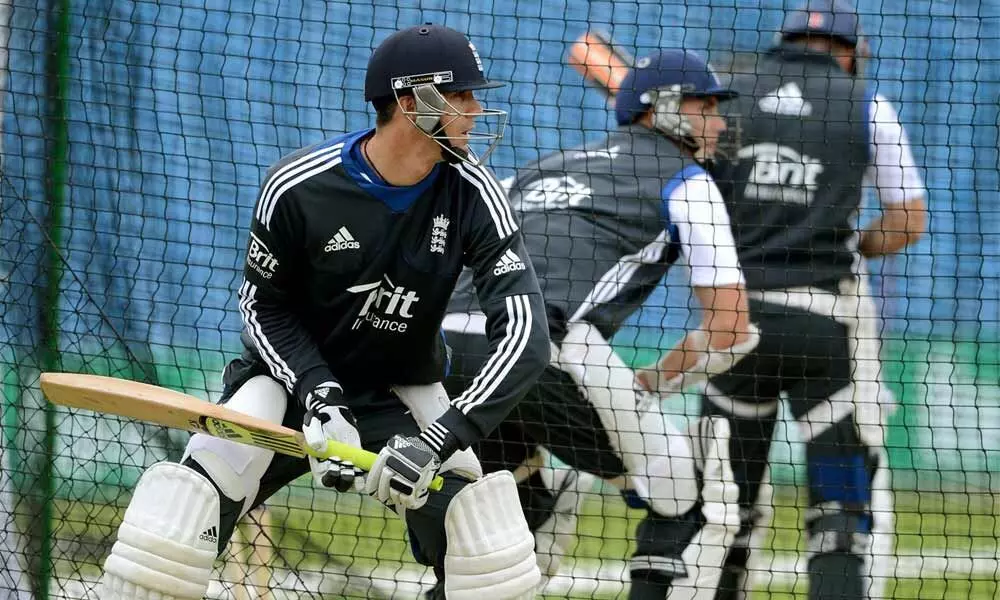Batting at an innovative stage in cricket

Batting at an innovative stage in cricket
Cricket has always had the aura of being an elite sport that stood for values appreciated in different walks of life
Cricket has always had the aura of being an elite sport that stood for values appreciated in different walks of life. This is precisely why it has been a popular game for so long. The players in white amid the village greens, or at the stadium, were looked up to as gritty warriors representing a community, village, city, or a country, all aiming to succeed.
The cricket stars who shone as knights in white armour were revered, loved and idolised from the game's inception to our present-day heroes. The rules and the playing conditions over years were tweaked to make cricket more attractive and absorbing. Similarly, cricketers' innovation in the art of batting, bowling, fielding, and even field placements has kept the game in motion.
One marvelled at the way W G Grace mastered the defensive stroke as well as his lusty hits in front of the wicket. Then arrived the Indian magician, Ranjitsinhji, whose supple and subtle skill invented the glance, and his wristy strokes left many a spectator spellbound.
The great Don Bradman, unanimously considered as the best batsman ever to play the game, played it traditionally in a conventional way to make batting an art that brought about character and consistency.
Test cricket for a century was played imbibing the style of the 'Don' of cricket rather than innovating in the art of batsmanship. Cricketers practiced and played to master the defence and stroke play left behind by the Australian legend.
Limited overs cricket has changed the approach and the skills required by a batsman completely. One may sit and rue the fact that cricket as played traditionally has changed for the worse, but if one evaluates it without malice, cricket has progressed by leaps and bounds.
Mike Gatting's reverse sweep that cost England a possible World Cup win in 1987 and the leg side scoop of Misbah-ul-Haq of Pakistan in the first T20 World Cup final in 2007 against India were frowned upon. Today, these two shots have become a part of a cricketer's armoury and one that youngsters want to learn at the kindergarten stage.
The reverse sweep was in existence since the late 70's. Javed Miandad, the master blaster of Pakistan batting, played this shot to my slow off-spin during our practice game in England during the 1979 World Cup. My colleagues had a laugh at my expense, and I felt ashamed to be swept on both sides of the wicket for boundaries. However, we were all quite enchanted by the stroke and none of us ever ventured to ever try it out even in the nets, as we felt it was too risky.
Looking back, Ramnath Parker, the Indian opening batsman of the 70's, was one player who at times played unconventionally. He played the falling down sweep, very similar to the legside scoop being played now, which was made famous by the West Indian batting legend Rohan Kanhai. He also played the uppercut to a short rising fast bowlers' delivery.
This shot became a signature shot when Sachin Tendulkar smashed Shoaib Akhtar over the third man for a six in the 2003 World Cup in South Africa. Since then, every batsman around the world has learnt to either hit it forcefully or glide the ball in that area. A shot that was risky to play earlier has become a good scoring shot because of the thick wooden, well-pressed bats being used at present.
The bats have made hitting sixes an everyday affair and one can see even mishits and edges flying miles high into the stands. The last decade has brought a sea of change and innovation in the art of batsmanship. Batting has blossomed as never before. The aggressive and positive attitude of T20 cricket as well as one-day matches has been instrumental in making Test cricket attractive.
The wonderful aspect of it all is that conventional players like Virat Kohli, Cheteshwar Pujara and Kane Williamson are still successful playing in the traditional way, compared to Rishabh Pant, Hardik Pandya and many other uncharacteristic batsmen around the world.
Pant's success in Test cricket has been a revelation. His reverse scoop against the bowling of Jimmy Anderson and later against Jofra Archer had one gobsmacked. For him to do so in an international game was astounding. His success is what will be the new benchmark for players of the future. A batsman's stroke-play is now a 360-degree affair.
The bats have made the game totally skewed in favour of the batsman. The field restrictions that were put in place to make the limited overs version attractive needs to be closely looked into by the ICC. The juniors as well as the women are hitting balls into the spectators' stands. The fielder at the boundary, at most times, is becoming a mere onlooker, even when batters have mishit a shot. The players field restrictions need to change to make it a more even contest between the bat and the ball.
T20 has made cricket very exciting. Very shortly one may see a batsman hit it straight over the bowler's head for a six by playing the reverse bat. This one may seem an incredible shot but so were the glance, the late-cut, the reverse sweep, and the legside scoop as well as the upper-cut and glide. But for a batsman to hit a fast-speeding ball over his head from a good length ball for a boundary, still takes one's breath away. Hats off to Rishabh Pant!
(Yajurvindra Singh is a
former Test cricketer.
Views expressed are personal)















